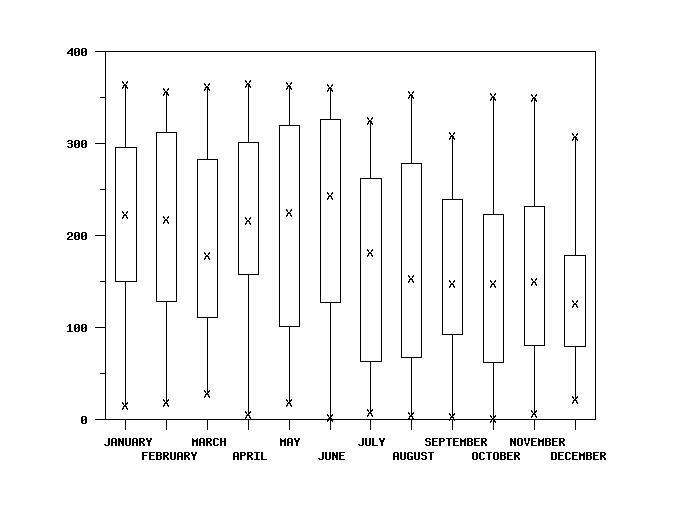

|
CHARACTER CODE STRINGName:
command. This command stores the character fields in the file "dpchzf.dat". The two primary uses of character data are:
The command GROUP LABEL can be used to create a group label variable. However, in some contexts you may want more flexibility with the character data than provided by the GROUP LABEL command. The CHARACTER CODE STRING command can be used in this case to create explicit character strings. The CHARACTER CODE STRING command identifies the unique rows in the character variable (Dataplot checks for exact matches, it does not try to guess if a typo has occurred, etc.). If there are K unique rows, Dataplot will generate K character strings. The command defines a base name for the string and the appropriate index number will be appended to the string names. The CHARACTER CODE STRING extracts the index number for the string name in the order that the unique rows are encoutered in the file.
where <ix> specifies the name of the character variable in the file dpzchf.dat; and <sbase> specifies the base name for the strings to be generated. The character variable is originally created with a READ command where the SET CONVERT CHARACTER ON was entered prior to the READ.
READ TEST.DAT Y X IX LET SLAB = CHARACTER CODE STRING IX
set convert character on
skip 25
read draft69c.dat rank day month
.
. Add cr() to alternating strings
.
let ig = character code string month
let string cr = sp()cr()
loop for k = 2 2 12
let ig^k = string concatenate cr ig^k
end of loop
let ignew = group label ig1 to ig12
x1tic mark label format group label
x1tic mark label content ignew
let xcode = character code month
.
major xtic mark number 12
minor xtic mark number 0
xlimits 1 12
xtic offset 0.5 0.5
.
char box plot
line box plot
fences on
.
box plot rank xcode

Date created: 10/31/2011 |